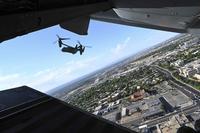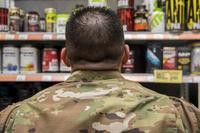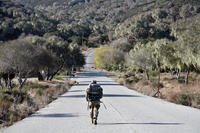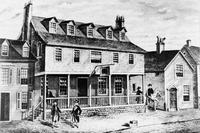The Army, unhappy that the House Armed Services Committee plans to cut $200 million from its top modernization program, plans a June 11 assault on the House side of the Capitol using elements of its Future Combat System. Relax! It’s a joke.
But the Army really does want to show the Hill just how effective FCS can be and how much it is beginning to produce capabilities soldiers use in Iraq now or in the near future. And it does plan a June 11 demonstration on the Hill.
Lt. Gen. Stephen M. Speakes, the Army’s deputy chief of staff for programs, spoke Thursday afternoon with reporters and one of his first points was that the Army does have a “vision” when it comes to FCS. I asked Gen. Speakes how the Army is answering the HASC, which made a fairly compelling argument. Rep. Neil Abercrombie (D-Hawaii), chairman of the House Armed Service airland subcommittee, said he cut 5.5 percent of program funding “to reduce concurrency of network and manned ground vehicle development and reduce program management costs.” On top of that, the subcommittee shifted $33 million from “long-term portions of the program to near-term elements that have a chance of being fielded by 2011.” Abercrombie made it clear that technical reasons weren’t the only justification for the reduction. FCS, he said, “continues to operate in violation of many major Department of Defense acquisition policies, including the basic and long-standing policy requiring full and adequate testing of equipment before production begins.” If that sounds to you like the Democratic complaints about the Missile Defense Agency’s approach to acquisition, you win a Kewpie doll.
Gen. Speakes very respectfully offered this justification when I asked him how the Army is answering the House criticisms: “This is an integrated program. You can’t break it apart and still deliver the capabilities.” Also, Speakes said the service plans to show lawmakers just how much FCS is influencing the fight, citing the FRAG kit 5 armor used on Humvees, which he said is the “precursor” for FCS armor. The first version of the crucial FCS network, progress on which has been criticized by the Government Accountability Office in recent reports, is being tested at Fort Bliss. Most of all, Speakes said, “the pressure in on us to deliver and to make the capabilities we are talking about and make them real. We think we are answering that test.”
Speakes’ approach on all this may have been influenced by Rep. Jim Saxton (R-NJ), ranking member of the airland subcommittee. In a recent blog about FCS, Saxton said the Army “needs to spend less time trying to save the FCS program; and more time explaining how soldiers want and need the capabilities that FCS brings to the fight.”
Speakes also addressed the challenge in Defense Secretary Robert Gates’s May 13 speech in Colorado, when he said the military must beware of planning to fight the next war and find itself unready for the current one.
He said that FCS, which he saw in action at Fort Bliss, “must continue to demonstrate its value for the types of irregular challenges we will face, as well as for full-spectrum warfare.” Speakes said FCS will be able to go anywhere and handle any fight. It is, for example, being modified to better cope with the threat from IEDs, he said.
We’ll see whether the House Democrats and Gates buy in. Reminder – the Senate Armed Services Committee fully funded the administration’s $3.6 billion request for FCS.








